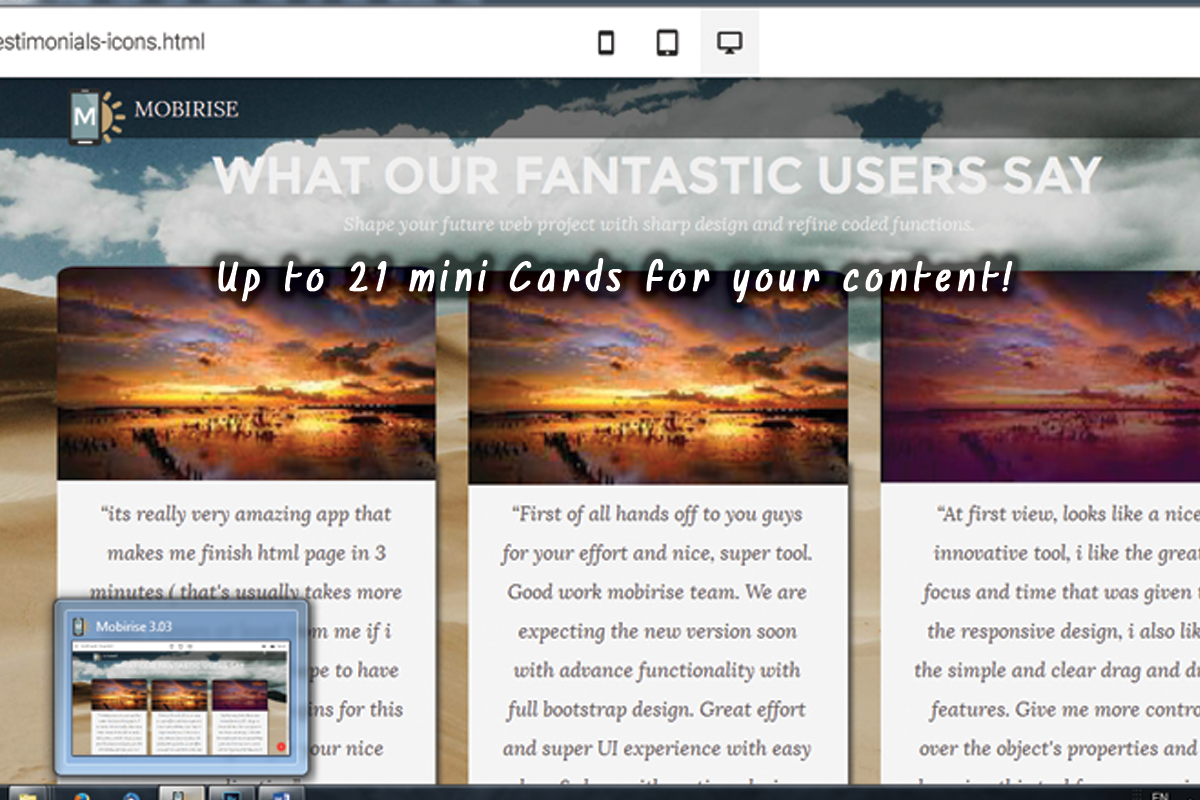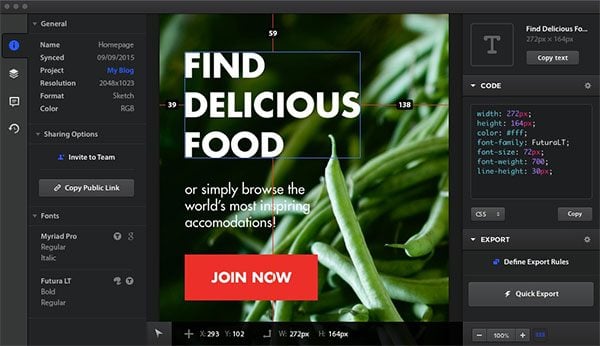Today's Best Tech Deals
- Sandvox 2 is an excellent visual website-design tool for individuals and businesses that need to create attractive sites without having to learn the HTML/CSS/JavaScript that goes into it. Overall, Sandvox is an excellent option for anyone who wants to quickly create basic but still useful and attractive Web sites.
- Photoshop is also considered as one of the best graphic design software for beginners as it comes with simplified options like: Basic: Cropping, straightening, rotating and flipping. Auto-Fix: One touch adjustment.
- Freeway Express is a simple and attractive web design tool for MacOS that is based on DTP (Desktop Publishing) application meaning you can build websites using.
- Best Website Builders for Mac Mac users know that ordinary website development soft for PC isn't suitable for using it on Mac Systems. Official software from Mac isn't convenient and not so perfect tool for website building, so many ask a question: what website builder is the best for Mac?
RapidWeaver for Mac is a powerful and easy to use web design app that puts you back in control. Build your own beautiful, responsive, websites without having to write a line of code. Build your own beautiful, responsive, websites without having to write a line of code.
Picked by Macworld's Editors
Top Deals On Great Products
Picked by Techconnect's Editors
Softpress Systems Freeway Express 6
Read Macworld's reviewRiver SRL Sparkle
Read Macworld's reviewKarelia Software Sandvox 2
Read Macworld's reviewRealmac Software RapidWeaver 6
Read Macworld's reviewMacaw 1.5
Read Macworld's reviewRage Software EverWeb 1.8.2
Read Macworld's reviewCazoobi Blocs 1.3
Read Macworld's review

A crowded slate of Mac apps aim to make building a full-featured, modern website drag-and-drop simple. Many even support one of the most crucial new web trends: responsive design, which can automatically switch up your layout to look good on a widescreen monitor, a tiny smartphone, or anything in between.
While no single program currently offers all the power, flexibility, and simplicity I’d hoped for, I did find two particularly strong contenders that at least came within shouting distance of that ideal.
Top choice for complete beginners: Blocs
If you have no idea how to start building a site, start with Blocs (). At $70, it’s $10 cheaper than most of the other programs in this roundup. And thanks to its extensive library of well-crafted chunks of code, it makes assembling an impressively slick site almost as simple as snapping together a pile of Lego blocks.
Even before you begin, Blocs has done the hard work for you, building snippets of sample code that you can mix, match, customize, and stack. Just pick a clearly color-coded section of your design—header, body, or footer—and choose a chunk of layout to add, whether it’s a fancy screen-filling photo, a few columns of text, or a swath of smaller icons or images. Once it’s in place, you can tweak the template to suit your needs. At every turn, Blocs tries to sweat the small stuff so you don’t have to, including a navigation menu that’ll automatically update as you add new pages to your site.
Spartan but clear thumbnails help you choose which chunk to add next, and accurately represent what you’re getting. While you’re limited largely to that ready-made collection, Blocs offers a wide enough selection of appealing elements to build an appealing site. And since all the code’s prebuilt, every site you make in Blocs has responsive design support baked in, without any extra effort on your part. The sample site I built looked great on big and small computer screens, good on my iPad, and decent enough on my iPhone 5S.
Blocs’ balance between a sparse selection and effective results also applies to its feature set, including a limited but appealing roster of fonts, and its extremely basic control over text styling and padding. That deliberate simplicity helps keep new users from getting overwhelmed, and further flattens out the already gentle learning curve.
Blocs’ stark, dark design departs from Mac conventions, and some aspects take a little time to learn. Instead of bringing up contextual menus, right-clicking brings up a palette of individual page elements you can add to the existing code. Placing objects on the page can occasionally feel a tad squirrely, though it’s easy to undo mistakes or move a misplaced item.
Blocs is a work in progress, and its creator’s laid out an ambitious, intriguing slate of potential upgrades. For now, Blocs sets modest goals, but carries them out impressively well.
Top choice for everyone else: EverWeb
Best Web Design Tools
If you know just enough HTML and CSS to get yourself in trouble, trust EverWeb () to keep you out of it. It’s more flexible and freeform than Blocs’ do-it-for-me simplicity, and it’s full of thoughtful tricks to help users get around the program’s own limitations.
When creating a site, you can choose from an extensive slate of great-looking, up-to-date templates, or start from scratch. Like Pages, EverWeb lets you draw text and image boxes or other shapes directly onto your page, then position and style them as you wish. I liked the program’s clean design and well-crafted interface. It lacks a grid or guides to keep your page tidy, but EverWeb will automatically or manually align elements by their edges or centers. The layout engine sometimes had trouble accurately aligning full-width elements, but otherwise proved fun and responsive.
EverWeb offers more options for CSS styling than Blocs; it won’t give you precise control of every element, but it provides enough choices to make a nice-looking site. Top-notch prebuilt widgets, including image sliders, image galleries, navigation menus, and more, are easy to edit and customize, and they yield great results. I was particularly impressed with the PayPal widget, which lets you build a full-featured online store with minimal time and effort—an ability most rivals either don’t offer or charge extra for.
Rather than supporting responsive design, EverWeb provides mobile versions of many templates, and builds in an easy way to redirect mobile users to those pages from their desktop counterparts. That solution gobbles extra server space and bandwidth, but can also be less hassle than trying to reconfigure the same design to fit different-sized screens. Other clever workarounds let you expand EverWeb’s font roster with your own picks, a feature found in too few of its competitors.

The code EverWeb produced was somewhat messy in the version I tested, though by the time you read this, an update promising sleeker results may be available. Still, I enjoyed EverWeb’s terrific balance between friendly design and a robust feature set.
Top contenders
Macaw
Macaw () talks a big game but doesn’t entirely deliver. Aimed at high-end pros, it offers more power and flexibility than any other program here. However, it’s also the most intimidating and frustrating app of the bunch, in part because it feels only half-finished.
Macaw excels at its finer points. You can tweak nearly every CSS style attribute via well-designed palettes, and build custom style classes to apply to any element on your page. Smart scripting support lets you drag in existing variables and color swatches as you write your code. And only Macaw offers pixel-precise control over responsive design, letting you set breakpoints at multiple screen widths, then rearrange your design to best fit each one.
But while it gets the little things right, Macaw seems to struggle with the big ones. I found layout exasperating, as if the program were always fighting me. The help files are sometimes confusing and often incomplete—bad news for a program as dense as this one. You can only add to its limited list of fonts by paying for a subscription to Adobe Typekit. And rather than focusing on fixing these gaps in the existing version, Macaw’s creators seem instead to be working on its new sibling, Macaw Scarlet, which promises even more sophisticated features.
RapidWeaver
If you just want to pour your content into a limited set of sharp-looking templates, with responsive design already built in, RapidWeaver () will work great. This powerfully extensible program can do far more than that, too‑but you’ll have to pay a good deal extra to unlock its full potential.
RapidWeaver’s by far the best choice here for building a blog or a podcast, with excellent, easy support for adding new entries and episodes. But I didn’t like how it forced me to flip back and forth between the raw content on my pages and a full preview of how they’d look online.
If you want to branch out beyond its small slate of templates, keep your wallet handy. The app’s online market of powerful plugins offers tons of new capabilities and professionally designed themes. But their considerable cost could quickly add up to more than you paid for RapidWeaver itself.
The rest of the pack
Sandvox
Sandvox () loses points for its limited customization and big but outdated selection of designs. However, it’s delightfully easy to use, including a super-simple integrated hosting service that seems fairly priced for what it offers. And changing the whole look of your site is as easy as choosing a new template. I think Sandvox would make a great choice for teachers and students, or for parents who want to help their kids build a fun, basic site.
Sparkle
Sparkle () is a perfectly respectable app that unfortunately gets outshined by EverWeb, which feels like Sparkle’s very similar-looking but ultimately superior cousin. I give Sparkle kudos for at least trying to make it easy to add third-party web fonts, even if the execution’s a little clunky. Its preset page sizes for responsive design also work better in concept than reality. Sparkle could become a real gem, but it needs more polish first.
Freeway Express

Best Tools For Website Design
Living up to its name, Freeway Express () is free. And if you endure its labyrinthine help files, you can build some nifty things relatively quickly. But its cluttered interface can prove frustrating, and it renders pages with such sorely outdated techniques—years behind every other app here–that you’re probably better off avoiding it. A paid pro version offers a much more power and sophistication, but also costs a whopping $150.
Bottom line
Best Website Builder Tools
Text editors are cheap or free, as are resources to teach yourself HTML, CSS, and jQuery—all more intuitive than they sound, even for non-geniuses. But that education demands dedication, time, and persistence, especially since today’s cutting-edge code quickly becomes tomorrow’s cobweb-covered embarrassment.
If you’d rather opt out of that Red Queen’s race, you’ll at least have a few good choices, whether you pick Blocs’ sleek simplicity or EverWeb’s user-friendly flexibility. I suspect Mac users will have even better, more complete options for building websites in a year or two. But for now, those two are the best of the bunch.
Softpress Systems Freeway Express 6
Read Macworld's reviewRiver SRL Sparkle
Read Macworld's reviewKarelia Software Sandvox 2
Read Macworld's reviewRealmac Software RapidWeaver 6
Read Macworld's reviewMacaw 1.5
Read Macworld's reviewRage Software EverWeb 1.8.2
Read Macworld's reviewCazoobi Blocs 1.3
Read Macworld's review